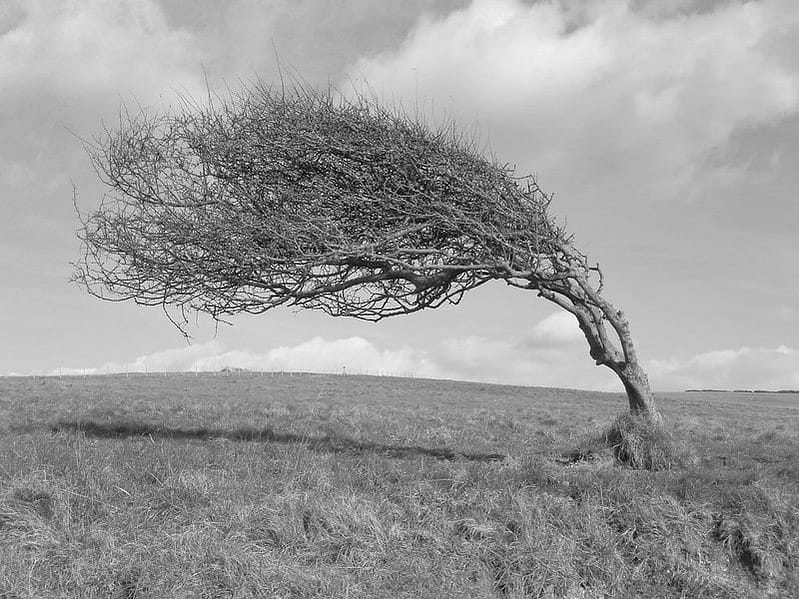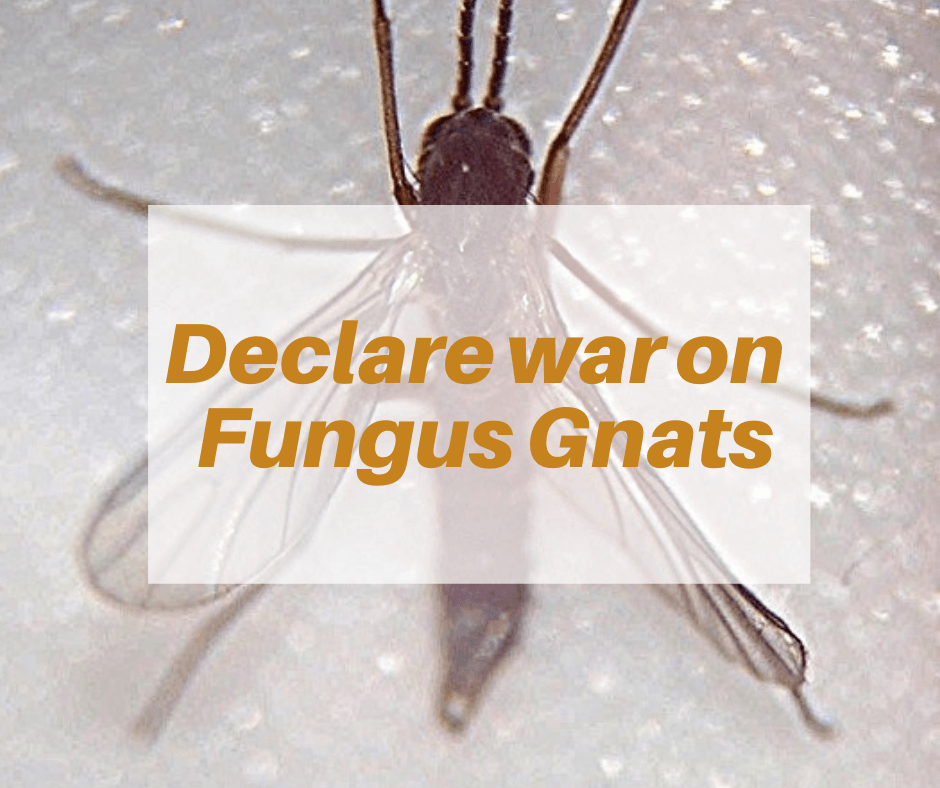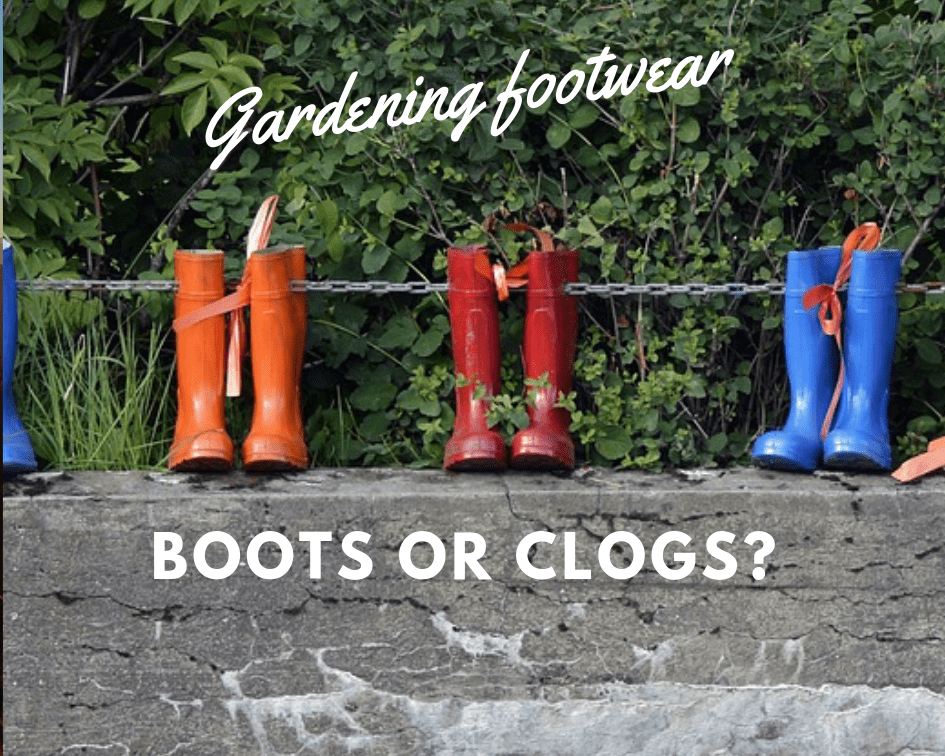This post may contain affiliate links. As an Amazon Associate we earn from qualifying purchases.
Can you protect plants from wind? Read on to find out!
So many gardening questions can truly only be answered by “it depends.”
Frustrating, isn’t it?
Can I grow hibiscus in my garden? It depends. Where do you live?
When can I plant my new peach tree? Again, that depends. Sure, we can give a general answer, such as “late winter, early spring.” But that doesn’t cut it, right?
This is why we have heat zone guides, such as Sunset’s Climate Zones (for gardeners in the western U.S.), the American Horticultural Society’s Heat Zone Map and those that advise on cold-tolerance, such as the USDA hardiness zones map.
Even those resources have caveats. Take the USDA hardiness zones, for instance. Some areas within each zone may be warmer or cooler than the zone stipulates. These areas have what is known as “microclimates,” and aren’t accounted for on any of the maps.
Last night, I received a wind advisory from the National Weather Service on my phone telling me there is a wind advisory in effect.
“It remains in effect from 8 pm this evening to 11 pm PDT Sunday. North winds 20 to 30 mph with gusts up to 50 mph expected.”
I did what all gardeners probably do: Went about trying to protect plants from wind.
What do you do when heavy winds hit your area? Let’s dive into some tips to help protect vulnerable plants before the heavy winds hit.
Which plants are the most vulnerable to wind damage?
These are the ones most urgently in need of protection from wind damage. Consider starting your protection routine on your plants with:

Stems that can snap
Green snap of corn is the perfect example of stems that can snap during blustery winds. This is a condition when “… rapidly growing stalks are broken by strong, sudden winds …,” according to experts at Iowa State University Extension and Outreach.
Think of other plants in your garden that might snap. Also, keep in mind that “Plants with upright stems tend to crack in the blowing wind,” according to the pros at Salisbury Greenhouse in Alberta, Canada.
 Stems/trunks that can bend
Stems/trunks that can bend
My zinnias are a good example of this. Tall and lanky, the lightest prolonged breeze sends them bending with the wind. Although they don’t snap, I’ve yet to get them to stand upright again, but since it’s near the end of the season, I will let them be.
Shallow roots
I may have lost a plumeria during our last period of heavy wind. It was completely uprooted and left lying on the soil. Plumeria have shallow roots and, because this one is young, that it was uprooted was no surprise.
A tree’s “… roots have the task of job of anchoring the tree,” according to Washington State University Extension’s horticulture specialist, Marianne C. Ophardt.
Regardless of the size of the tree, those with shallow roots are prone to being torn from the soil if the wind is hefty enough. Below, we’ll show you how to protect any shallow-rooted plants in your garden before the wind kicks up.
 Big leaves
Big leaves
Plants with big leaves usually take the brunt of a powerful windstorm. Think of the banana plants with once-gorgeous leaves that are shredded and tattered.
Don’t forget Desiccation
Desiccation is a condition that happens when a plant loses more water through its foliage than it takes up from its roots. The result is leaves with a brown cast or brown splotches.
 How to protect plants from wind
How to protect plants from wind
If you live in an area that if frequently hit with high winds, keep an eye on the weather forecasts. If there is a severe wind alert, find out from which direction the wind will be coming. You can find out by visiting the National Weather Service website and entering the name of your city.
Also important is wind velocity. “Most damage occurs with winds above 30 miles per hour,” suggests the UC Marin Master Gardeners in California.

How to protect plants that bend or have snap-prone stems
The best way to protect these plants is to cover them.
- Use large buckets, overturned, to cover shorter plants
- Use tomato cages to protect taller plants. Yes, the leaves will still take the brunt of the wind, but the cage will prevent the stems from bending enough to snap. Or, copy the idea from the photo, above. It’s brilliant, isn’t it?
- Stake taller plants to keep them from snapping
While the tomato cages and stakes should be safe from the wind picking them up taking them away, plastic buckets aren’t. Consider placing heavy rocks on top of them.
Protect plants with shallow roots
Securely staking these trees and plants is the best way to keep them upright and in the soil during heavy winds.
Desiccation is a real concern when it’s windy
Since it is pretty much impossible to cover a huge tree, use an anti-desiccant such as Wilt-Pruf®. We choose this brand because it’s organic.

Prepare for the future with wind-proof structures
If heavy winds are frequent in your area, consider creating wind screens. These can be made with plants or windscreen cloth or shade cloth (easy DIY project).
You can also purchase ready-made wind screens.
If you want to go the DIY route, you’ll find a brilliant walk-through on this Australian website (scroll down until you find EricL’s post). He even includes some pictures of how it should look when completed. There is one at the top of this section.
The supplies you’ll need include three 5 ft. 5 in. steel fencing posts, shade cloth and cable ties, available at Amazon.com and I also found all of them at Home Depot.

Think long term
If gusty winds are a frequent problem in your garden, consider planting a living windbreak. No, it’s not an overnight solution, but it’s one of the best solutions for the long term; especially if you grow a lot of plants.
“The effectiveness of a windbreak depends on choosing the right trees and shrubs and planting them at the right density and spacing,” cautions Gary Wyatt, extension educator with the University of Minnesota Extension.
He goes on to suggest that a “… mix of deciduous and coniferous plants is best.”
For a list of suitable plants, see the website at the University of Minnesota. Scroll down toward the end of the article to find the list.
Remember, his recommendations are most likely suited for Minnesota gardeners so use the suggestions as a guide to find plants that are similar yet better suited for your region and your garden.





